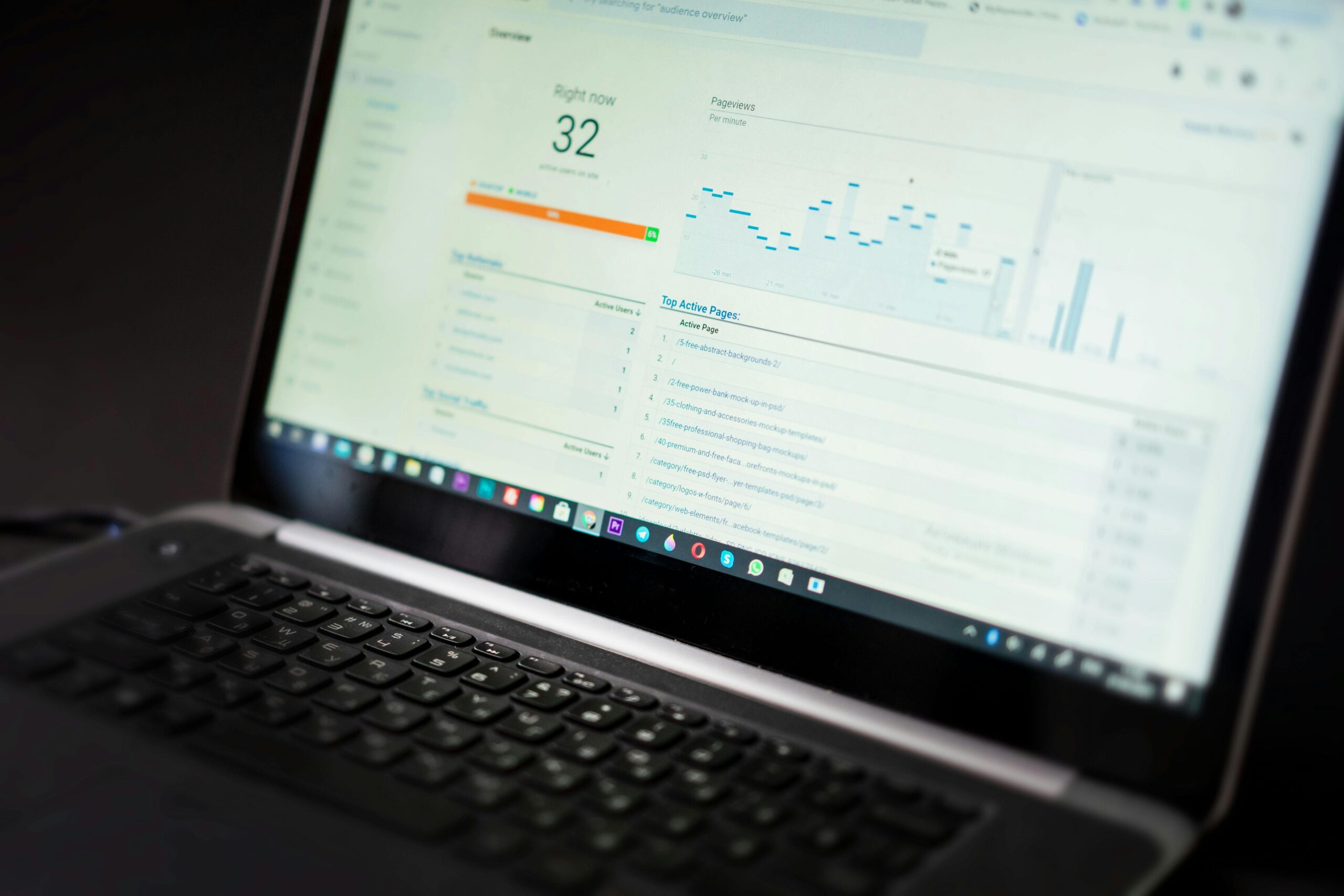Key Performance Indicators are the compass that guides organizations toward their strategic goals, transforming abstract objectives into measurable, actionable insights that drive sustainable growth and competitive advantage.
🎯 Understanding the Foundation of Effective KPI Design
In today’s data-driven business landscape, the ability to design and measure Key Performance Indicators effectively separates thriving organizations from those struggling to maintain direction. KPIs serve as the critical link between strategic vision and operational execution, providing tangible metrics that illuminate progress, identify bottlenecks, and empower decision-makers with actionable intelligence.
The challenge many organizations face isn’t a lack of data—it’s the overwhelming abundance of it. Without properly designed KPIs, businesses drown in metrics that consume resources without delivering meaningful insights. Mastering KPI design requires understanding not just what to measure, but why specific metrics matter, how they interconnect, and what actions they should trigger.
Successful KPI frameworks begin with clarity of purpose. Every indicator must align with strategic objectives, reflect actual business priorities, and be within the organization’s control to influence. This alignment ensures that performance measurement doesn’t become a bureaucratic exercise but rather a dynamic tool for continuous improvement and accountability.
The SMART Framework: Building Meaningful Performance Indicators
The SMART criteria provide essential guardrails for KPI design, ensuring that metrics deliver value rather than confusion. Specific indicators clearly define what’s being measured without ambiguity. Measurable KPIs can be quantified reliably and consistently over time. Achievable targets motivate teams without setting impossible standards that breed cynicism.
Relevant metrics connect directly to business outcomes that matter to stakeholders, customers, and strategic goals. Time-bound indicators establish clear periods for assessment, creating urgency and enabling meaningful comparisons. When these five elements converge, KPIs become powerful instruments for organizational alignment and performance optimization.
Consider a retail business seeking to improve customer satisfaction. A vague goal like “be more customer-friendly” lacks the precision needed for effective measurement. Transforming this into a SMART KPI might yield: “Increase Net Promoter Score from 45 to 60 within six months through enhanced post-purchase support and streamlined returns processing.” This formulation provides clarity, measurability, and actionable direction.
Leading vs. Lagging Indicators: Balancing Your Dashboard
Understanding the distinction between leading and lagging indicators represents a critical evolution in KPI sophistication. Lagging indicators measure outcomes that have already occurred—revenue generated, customer churn rate, or defect rates. These metrics provide valuable historical context but offer limited ability to influence future performance since the events they measure are complete.
Leading indicators, conversely, predict future outcomes by measuring activities and behaviors that drive results. Sales pipeline volume, customer engagement rates, and employee training completion predict future revenue, retention, and quality outcomes. Organizations that master the balance between these indicator types create comprehensive performance visibility spanning past results and future trajectory.
A balanced KPI dashboard typically incorporates both types strategically. Financial performance naturally relies on lagging indicators like quarterly revenue or profit margins. However, complementing these with leading indicators such as qualified leads generated or average sales cycle length empowers proactive management rather than reactive responses to historical data.
🔍 Identifying the Right Metrics for Your Organization
The proliferation of available metrics creates a paradox of choice. Organizations must resist the temptation to measure everything in favor of identifying the vital few indicators that genuinely drive performance. This selection process begins with stakeholder alignment around strategic priorities and cascades through operational levels with increasing specificity.
Effective metric identification follows a hierarchy from strategic to tactical levels. Executive KPIs focus on organization-wide outcomes like market share, revenue growth, or brand value. Department-level indicators translate these into functional metrics such as marketing qualified leads, production efficiency, or customer service response times. Individual performance metrics then connect personal contributions to broader objectives.
Cross-functional consultation during KPI selection prevents siloed thinking that optimizes one area at another’s expense. Sales and operations must collaborate on inventory turnover metrics. Marketing and finance need alignment on customer acquisition cost calculations. This collaborative approach ensures that KPI frameworks promote organizational cohesion rather than departmental competition.
Designing KPIs That Drive the Right Behaviors
Perhaps the most critical consideration in KPI design is behavioral influence. Metrics powerfully shape how employees allocate attention and effort, sometimes with unintended consequences. Poorly designed indicators can incentivize counterproductive behaviors that technically improve the measured metric while degrading overall performance.
A classic example involves customer service call centers measured solely on call duration. This metric encourages representatives to rush conversations, technically improving efficiency while potentially damaging customer satisfaction and first-call resolution rates. Comprehensive KPI design considers these potential distortions and creates balanced scorecards that prevent gaming the system.
Behavioral alignment requires anticipating how rational actors will respond to performance incentives. If sales teams are measured exclusively on revenue without profit margin considerations, they may offer unsustainable discounts that boost short-term numbers while eroding long-term profitability. Effective KPI frameworks incorporate multiple dimensions that encourage holistically beneficial behaviors.
📊 Implementation Strategies for KPI Measurement Systems
Designing excellent KPIs means little without robust systems for data collection, analysis, and reporting. Implementation success depends on technical infrastructure, process discipline, and cultural adoption. Organizations must invest in the tools and training necessary to transform KPI design into operational reality.
Data collection automation represents the foundation of scalable KPI measurement. Manual data gathering consumes resources, introduces errors, and delays insight availability. Modern business intelligence platforms, integrated analytics tools, and dashboard solutions enable real-time visibility into performance metrics, transforming KPIs from historical reports into dynamic management instruments.
Standardization ensures consistency and comparability over time and across organizational units. Clear definitions for each KPI, including calculation methodologies, data sources, and reporting frequencies, eliminate ambiguity. Documentation of these standards creates institutional knowledge that survives personnel changes and supports accurate trend analysis.
Creating Cascading KPIs Across Organizational Levels
Strategic KPIs at the executive level must cascade logically through organizational layers, maintaining alignment while increasing specificity. This cascading structure ensures that individual contributors understand how their daily work connects to corporate objectives, fostering engagement and accountability throughout the organization.
The cascading process begins with translating high-level strategic goals into departmental objectives. If the corporate KPI targets 20% revenue growth, the sales department might focus on new customer acquisition rates while customer success concentrates on expansion revenue from existing accounts. Each department’s KPIs contribute distinct pathways toward the overarching goal.
Individual performance indicators then derive from departmental metrics. A sales representative’s KPIs might include qualified leads contacted, conversion rates, and average deal size—all feeding into departmental acquisition targets. This hierarchical alignment creates transparency about expectations while empowering employees with clear performance standards.
🎨 Visualizing Performance: Dashboard Design Best Practices
Even perfectly designed KPIs fail to deliver value if stakeholders can’t easily access and interpret them. Dashboard design transforms raw data into intuitive visual narratives that facilitate rapid comprehension and informed decision-making. Effective visualization considers audience needs, information hierarchy, and cognitive processing limitations.
Executive dashboards prioritize high-level summaries with exception-based alerts highlighting areas requiring attention. Detailed operational dashboards provide granular metrics supporting day-to-day management decisions. The same KPI may appear in multiple dashboards with different visualization approaches optimized for each audience’s specific needs and decision contexts.
Visual design principles significantly impact dashboard utility. Color coding should follow intuitive conventions—green for positive performance, red for concerning metrics, yellow for caution areas. Trend lines provide context beyond point-in-time snapshots. Comparison benchmarks against targets, historical performance, or industry standards add interpretive frameworks that raw numbers lack.
The Critical Role of KPI Governance and Review Cycles
KPI frameworks cannot remain static. Business environments evolve, strategic priorities shift, and metrics that once provided insight may become obsolete or misleading. Formal governance processes ensure that performance measurement systems adapt appropriately while maintaining consistency for meaningful trend analysis.
Regular review cycles examine both KPI results and the continued relevance of the metrics themselves. Monthly or quarterly performance reviews assess progress against targets and identify corrective actions. Annual strategic reviews evaluate whether existing KPIs still align with business priorities or require modification to reflect changed circumstances.
Governance structures designate clear ownership for each KPI, assigning accountability for data accuracy, target-setting, and performance improvement. This ownership prevents metrics from becoming orphaned indicators that no one maintains or acts upon. Effective governance balances stability with flexibility, preserving historical comparability while allowing evolution.
⚡ Avoiding Common KPI Design Pitfalls
Organizations frequently stumble into predictable traps when designing performance measurement systems. Awareness of these common pitfalls enables proactive avoidance, saving resources and preventing the cynicism that accompanies failed measurement initiatives.
Metric proliferation represents perhaps the most frequent mistake. When everything is measured, nothing receives appropriate focus. Overwhelmed stakeholders ignore dashboards cluttered with dozens of indicators, defeating the purpose of performance visibility. Disciplined selectivity—typically limiting executive dashboards to 5-7 key metrics—maintains attention on what truly matters.
Vanity metrics provide another common pitfall. These indicators make organizations look good without connecting to meaningful outcomes. Social media follower counts mean little without engagement rates and conversion metrics. Website traffic is irrelevant without quality measures like bounce rates and goal completions. Effective KPI design ruthlessly eliminates metrics that stroke egos without driving results.
Setting unrealistic targets undermines KPI credibility. Aspirational stretch goals can motivate when viewed as possible with extraordinary effort. However, consistently unattainable targets breed cynicism and disengagement. Calibrating targets requires balancing ambition with achievability, often through historical performance analysis and competitive benchmarking.
Leveraging Technology for Advanced KPI Analytics
Modern technology has revolutionized KPI measurement capabilities, enabling sophisticated analytics previously accessible only to elite organizations. Cloud-based business intelligence platforms democratize advanced visualization, predictive analytics, and automated reporting, transforming how organizations derive insights from performance data.
Artificial intelligence and machine learning increasingly augment human KPI analysis. Predictive algorithms identify patterns suggesting future performance trends. Anomaly detection automatically flags unusual metric movements warranting investigation. Natural language processing enables conversational queries of performance data, making analytics accessible to non-technical users.
Integration capabilities connect disparate data sources, providing comprehensive performance visibility. Marketing automation platforms, CRM systems, financial software, and operational databases feed unified dashboards. This integration eliminates information silos, revealing cross-functional relationships that single-system metrics obscure.
🌟 Cultivating a Performance-Oriented Culture
Technical excellence in KPI design and measurement means little without cultural adoption. Organizations must foster environments where data-driven decision-making thrives, performance discussions occur constructively, and continuous improvement becomes embedded in daily operations.
Leadership visibility around KPIs signals organizational commitment to performance management. When executives regularly reference metrics in communications, incorporate KPI reviews into meetings, and make decisions explicitly grounded in data, they model behaviors that cascade throughout the organization. This top-down emphasis legitimizes performance measurement as central to operations rather than peripheral reporting.
Psychological safety enables honest KPI discussions without fear of punishment for unfavorable results. When underperformance triggers collaborative problem-solving rather than blame assignment, teams willingly surface issues early rather than hiding problems until they become crises. This cultural foundation transforms KPIs from judgment tools into improvement instruments.
Training investments ensure stakeholders possess the analytical literacy necessary to interpret metrics appropriately. Understanding what KPIs measure, how they’re calculated, and what factors influence them empowers meaningful engagement with performance data. Without this foundational knowledge, even well-designed dashboards fail to drive informed action.
Adapting KPIs for Remote and Hybrid Work Environments
The shift toward distributed work models necessitates rethinking traditional performance metrics. Output-based KPIs gain importance when physical presence no longer serves as a proxy for productivity. Organizations must measure results rather than activities, focusing on value delivered rather than time observed.
Collaboration metrics become particularly relevant in remote contexts. Communication frequency, cross-functional project participation, and knowledge-sharing indicators help assess team cohesion and information flow that spontaneous office interactions previously facilitated. These softer metrics complement traditional productivity indicators for comprehensive performance visibility.
Employee engagement and wellbeing KPIs gain prominence as organizations recognize that sustainable performance requires healthy, satisfied teams. Pulse survey results, voluntary turnover rates, and work-life balance indicators provide early warning signals for cultural issues that undermine long-term effectiveness, even if short-term output metrics appear satisfactory.
🚀 Turning KPI Insights Into Strategic Action
The ultimate purpose of KPI measurement is informing action. Organizations must establish clear processes translating performance insights into strategic initiatives, operational adjustments, and resource reallocations. Without this action orientation, even the most sophisticated measurement systems become expensive reporting exercises delivering no return.
Regular performance reviews create structured forums for converting data into decisions. These sessions should examine not only what the metrics show but why performance trends are occurring and what interventions might improve results. Root cause analysis transforms descriptive metrics into diagnostic insights that enable targeted improvement efforts.
Experimentation mindsets allow organizations to test hypotheses about performance drivers. A/B testing, pilot programs, and controlled rollouts enable evidence-based optimization rather than intuition-driven changes. KPIs provide the measurement framework for evaluating these experiments, accelerating organizational learning and adaptation.

Measuring What Matters: The Path Forward
Mastering KPI design and measurement represents an ongoing journey rather than a destination. As business environments evolve, competitive landscapes shift, and organizational strategies adapt, performance measurement frameworks must evolve correspondingly. Organizations that view KPI development as iterative rather than static position themselves for sustained success.
The most effective performance measurement systems balance rigor with pragmatism. They incorporate sufficient structure to ensure consistency and comparability while remaining flexible enough to accommodate changing realities. They measure enough to provide comprehensive visibility without creating overwhelming metric proliferation. They drive accountability without stifling innovation through excessive monitoring.
Ultimately, KPIs serve organizational mission rather than existing as ends unto themselves. When designed thoughtfully, measured accurately, and utilized strategically, these indicators illuminate pathways toward optimal performance. They transform abstract strategic ambitions into concrete operational realities, empowering organizations to achieve their fullest potential through disciplined, data-informed execution.
The journey toward KPI mastery requires commitment, discipline, and continuous refinement. Organizations willing to invest in robust performance measurement systems reap substantial rewards: clearer strategic alignment, improved accountability, faster problem identification, and ultimately, superior results. In an increasingly competitive business landscape, this capability represents not merely an advantage but a prerequisite for sustainable success.
Toni Santos is a behavioural economics researcher and decision-science writer exploring how cognitive bias, emotion and data converge to shape our choices and markets. Through his studies on consumer psychology, data-driven marketing and financial behaviour analytics, Toni examines the hidden architecture of how we decide, trust, and act. Passionate about human behaviour, quantitative insight and strategic thinking, Toni focuses on how behavioural patterns emerge in individuals, organisations and economies. His work highlights the interface between psychology, data-science and market design — guiding readers toward more conscious, informed decisions in a complex world. Blending behavioural economics, psychology and analytical strategy, Toni writes about the dynamics of choice and consequence — helping readers understand the systems beneath their decisions and the behaviour behind the numbers. His work is a tribute to: The predictable power of cognitive bias in human decision-making The evolving relationship between data, design and market behaviour The vision of decision science as a tool for insight, agency and transformation Whether you are a marketer, strategist or curious thinker, Toni Santos invites you to explore the behavioural dimension of choice — one insight, one bias, one choice at a time.




